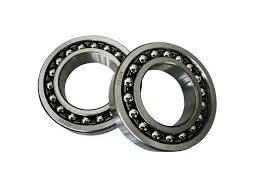
Dec . 10, 2024 00:18 Back to list
Understanding the Function and Design of Tapered Roller Bearings in Machinery Applications
Understanding Taper Roller Bearings
Taper roller bearings are crucial components used in a wide variety of machinery and automotive applications. They are designed to accommodate both radial and axial loads, providing a high degree of rigidity and stability. In this article, we will delve into what taper roller bearings are, their design, working principle, applications, and advantages.
What is a Taper Roller Bearing?
A taper roller bearing consists of tapered inner and outer rings, along with a set of tapered rollers. The unique design of the rollers allows them to make contact at a single line, which helps to distribute the load effectively. The taper angle of the rollers enables them to handle axial loads in one direction, making them ideal for applications where both radial and axial support is necessary.
Design and Construction
The construction of taper roller bearings is quite intricate. The inner ring is fitted with a raceway for the rollers, while the outer ring also has a corresponding raceway that matches the angle of the rollers. The rollers themselves are designed to have a tapered profile, which allows them to roll smoothly while maintaining the alignment of the bearing.
The key components of taper roller bearings are
1. Inner Ring This component houses the rollers and is typically mounted on the shaft. 2. Outer Ring This consists of a raceway that the rollers roll against; it is usually stationary. 3. Rollers The tapered shape allows them to fit snugly in the raceways, enabling effective load carrying. 4. Cage The cage keeps the rollers evenly spaced, which helps in maintaining the proper alignment and reducing friction.
Working Principle
When a load is applied to a taper roller bearing, the load creates a reaction force that is transmitted through the rollers to both the inner and outer rings. The tapered shape allows the rollers to maintain strong contact with the raceways, thus efficiently distributing the load. This contact also minimizes sliding friction, allowing the rollers to roll smoothly and reducing wear over time.
what is a taper roller bearing

Because taper roller bearings can handle both radial and axial loads, they are often used in pairs to manage thrust loads from both sides
. The correct assembly of these bearings is critical to achieving optimal performance.Applications of Taper Roller Bearings
Taper roller bearings are widely used across various industries due to their robust design and versatility. Some common applications include
1. Automotive They are extensively used in cars, trucks, and other vehicles for wheel hubs, transmissions, and differentials. 2. Industrial Machinery These bearings are found in gearboxes, conveyor systems, and other heavy machinery that experiences both axial and radial loads. 3. Aerospace Taper roller bearings are also utilized in aircraft systems, where reliability and performance are critical. 4. Railways They are essential components in train axles due to their ability to support heavy loads and high speeds.
Advantages of Taper Roller Bearings
The benefits of using taper roller bearings are numerous
- High Load Capacity Their design allows them to carry significant loads, making them suitable for demanding applications. - Versatile Performance Capable of handling both radial and axial forces, taper roller bearings offer flexibility in design and usage. - Reduced Friction The rolling motion of tapered rollers minimizes friction, extending the lifespan of the bearing and related components. - Improved Stability The contact geometry ensures better alignment and stability during operation, leading to improved performance.
Conclusion
In summary, taper roller bearings are vital components in many mechanical systems, providing efficient load management and longevity. Their unique tapered design allows them to handle complex load requirements, making them invaluable in automotive and industrial applications alike. Understanding their construction, function, and advantages can aid engineers and designers in selecting the right bearing type for their specific needs, ultimately enhancing the performance and reliability of the machinery.
Latest news
-
Grooved Ball Bearing Design and Functionality
NewsJun.04,2025
-
Concrete Mixer Bearing Load Capacity Testing
NewsJun.04,2025
-
6004 Bearing Dimensions in Robotic Joint Designs
NewsJun.04,2025
-
Advantages of Single-Row Deep Groove Ball Bearings
NewsJun.04,2025
-
Applications of Deep Groove Ball Bearings in Automotive Systems
NewsJun.04,2025
-
Innovations in Bearing Pressing Machine Design
NewsJun.04,2025
